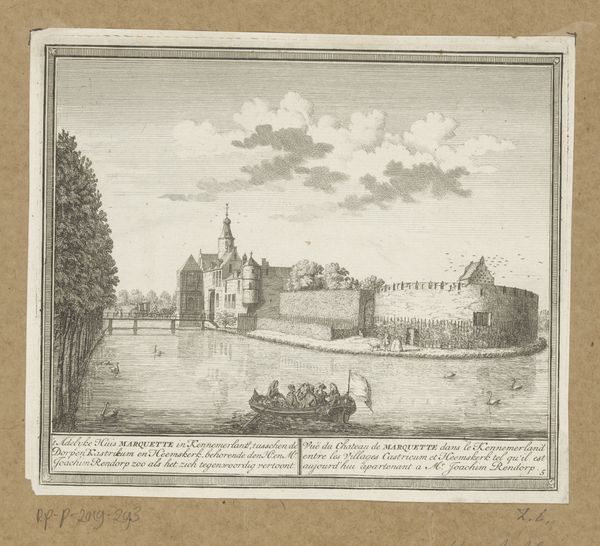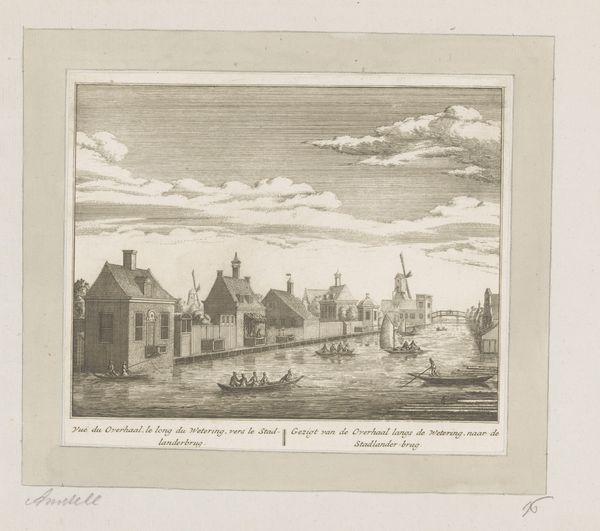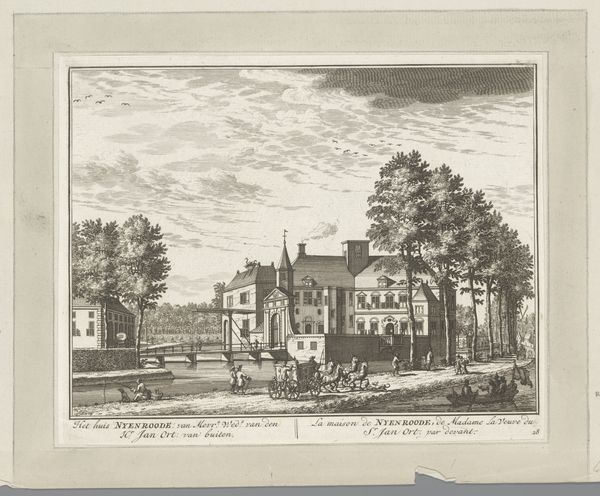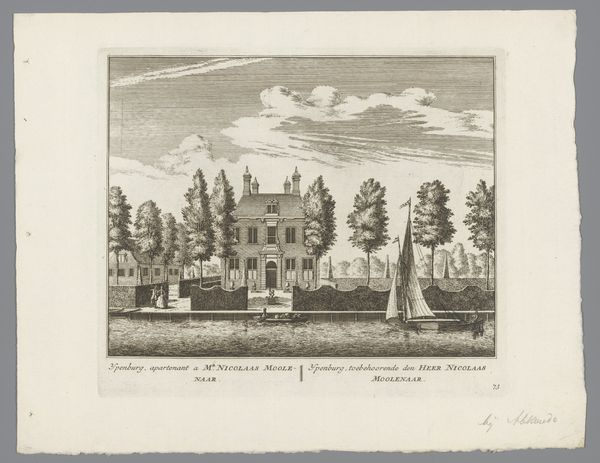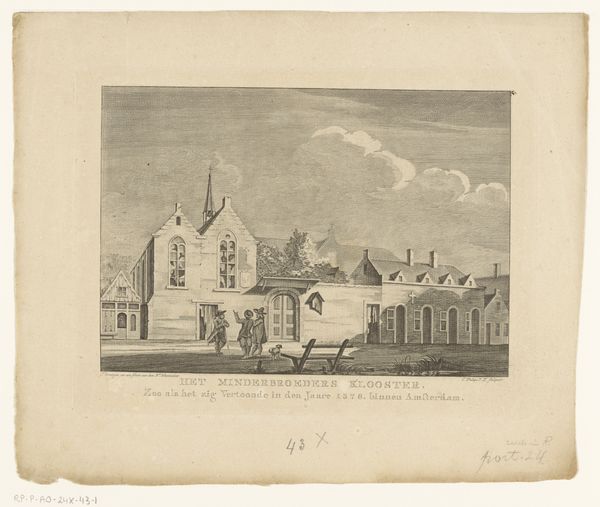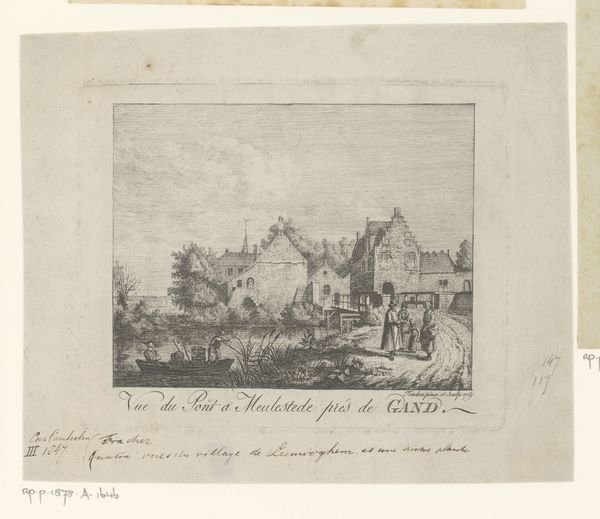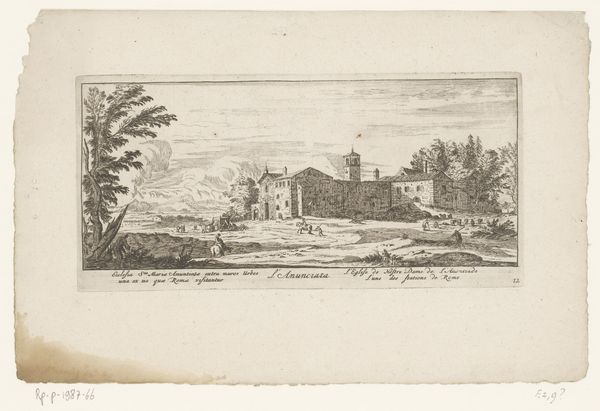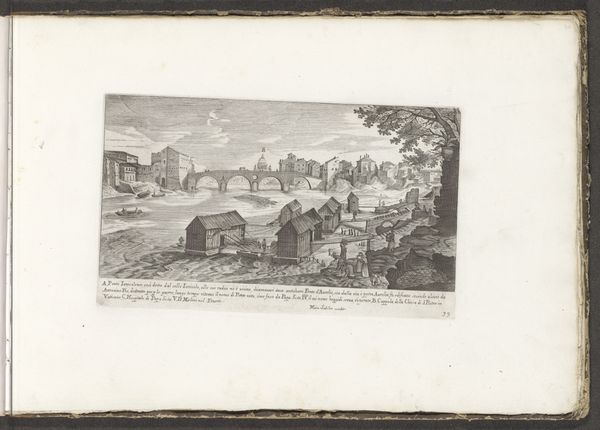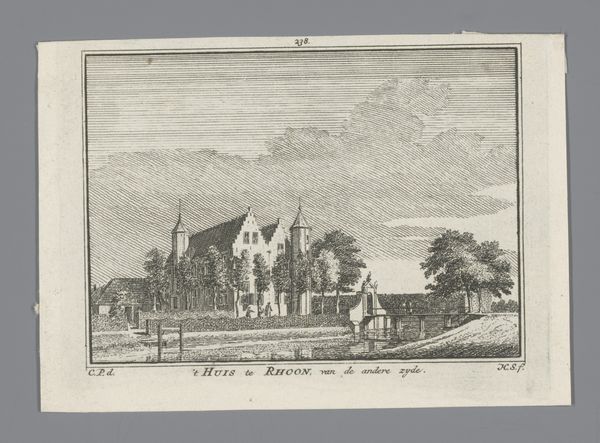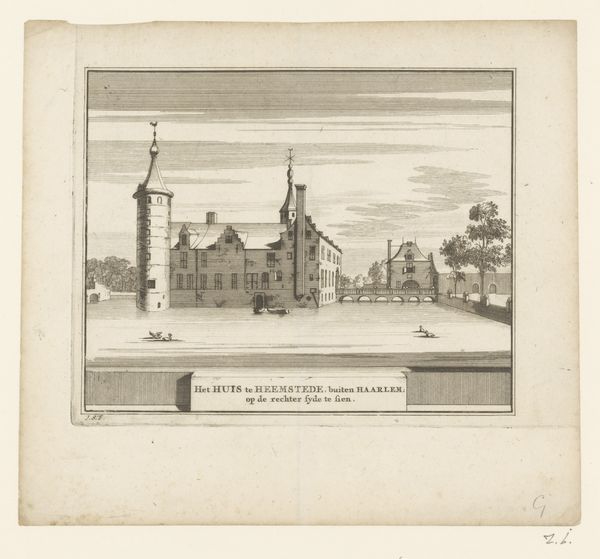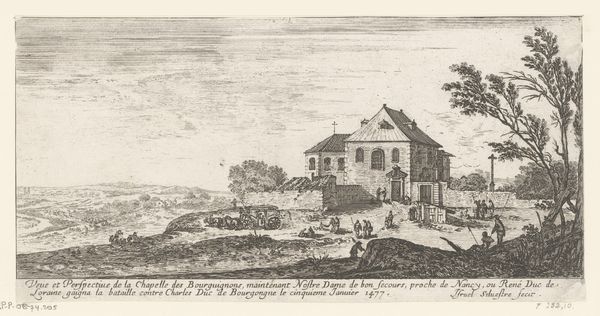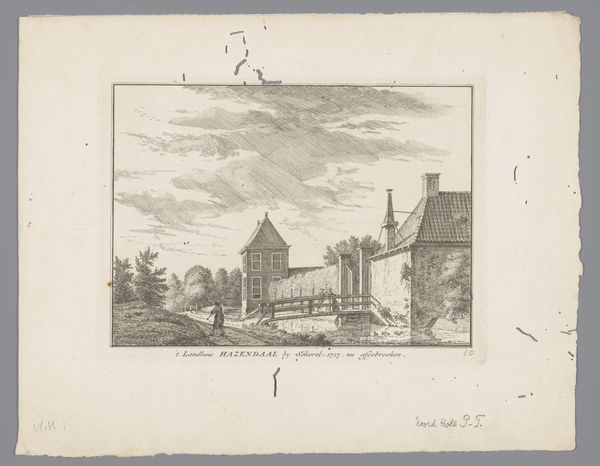
print, engraving, architecture
#
dutch-golden-age
# print
#
landscape
#
engraving
#
architecture
Dimensions: height 194 mm, width 212 mm
Copyright: Rijks Museum: Open Domain
Curator: Welcome! We’re standing before Jacobus Schijnvoet’s "Gezicht op de ruïne van Huis Albrechtsberg bij Bloemendaal," a meticulously rendered engraving from 1711 currently residing here at the Rijksmuseum. It depicts the remnants of Albrechtsberg House, near Bloemendaal. Editor: Oh, it's melancholy, isn’t it? This careful rendering of something crumbling. The detail almost feels like a loving eulogy to what once was. Even the light feels like late afternoon, casting long shadows of decline. Curator: Indeed. The piece resonates with a very specific interest that emerged during the Dutch Golden Age: the pictorial representation of ruins. It's about nostalgia, but it is also about understanding change. Aristocratic residences like these carried social weight and signaled particular histories; it meant something when they fell into disrepair. Editor: You see the people around, too, like small footnotes to a bigger story of fading glory. That lone figure standing near the haystack...there's such an isolation. It brings an elegiac sensibility as a response to what the march of time can bring: nature encroaching, stone turning to dust. Curator: Absolutely. The work operates on multiple levels. While presenting a seemingly objective view of architectural decay, it hints at broader shifts in societal power dynamics. We also need to understand the print medium here: engravings like this one helped to disseminate images far and wide, influencing tastes and shaping historical consciousness. Editor: I am also stuck by what you said before. There's an attempt here at precision, almost scientific observation, coexisting with a potent emotional message. It's about ruins, yes, but also about us, our transient moment here, mirrored in the stones that crumble. It sounds almost bleak. Curator: It speaks volumes of Dutch cultural values, the fleetingness of time, and a desire to preserve some record. Editor: In essence, it's more than just an architectural portrait; it’s an existential meditation, neatly captured within a small rectangle. How lovely and terribly sobering is that?
Comments
No comments
Be the first to comment and join the conversation on the ultimate creative platform.
